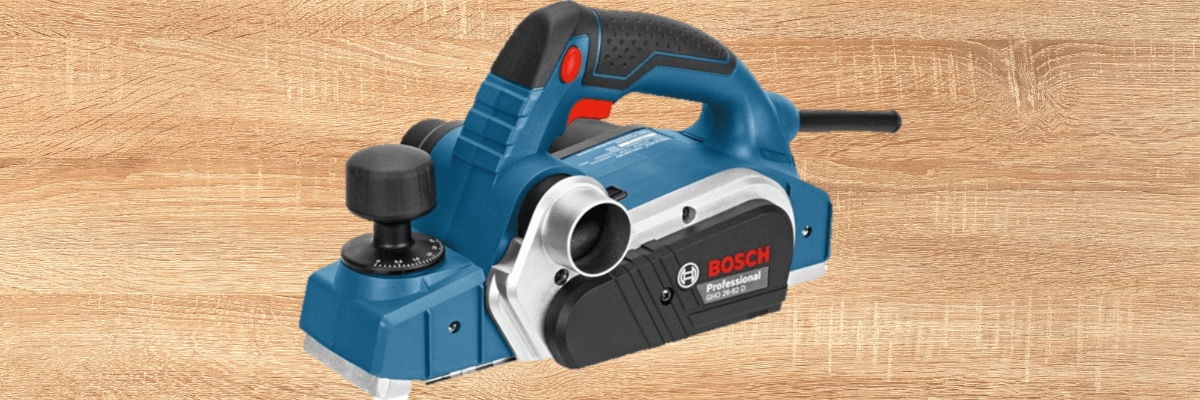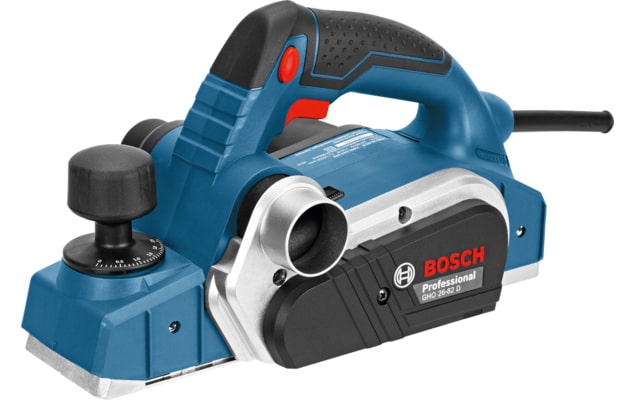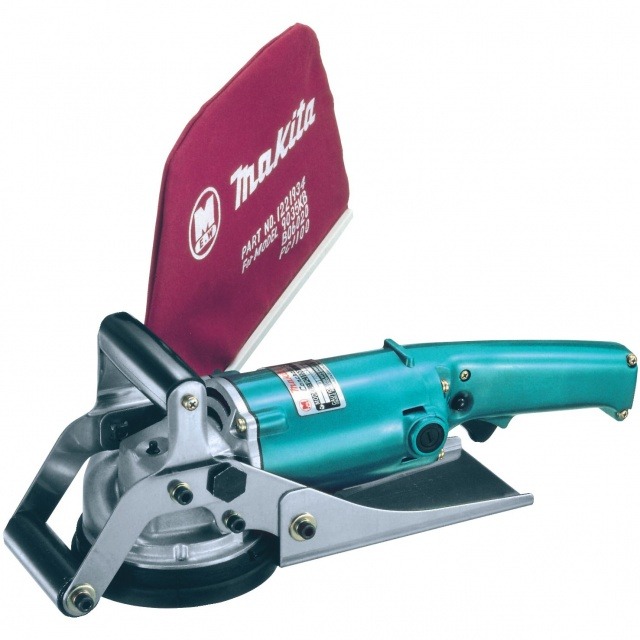
What is a Planer?
Equipped with blades at the base driven across the material's surface, planers shave off thin layers of the material, allowing the operator to achieve the desired shape, flatness, and thickness. Different variations are specialized for optimal use on certain tasks and materials; some are powered manually and some require electrical input. This guide will help you determine your needs, whatever your current project.
Speedy has two types of planers available for hire. For woodwork and carpentry, choose from our electric wood planer range.
For stonework and masonry, browse the handheld concrete planer collection.
1. Wood Planers
To operate a wood planer, lumber is fed through, at the desired depth, passing a blade or blades, which are positioned to take a thin layer of material off the surface. This can be repeated until the wood board is the desired shape or smoothness.
2. Hand Planers
Hand planers are powered and guided by the operator, demanding a high level of skill and effort, but are effective in achieving the desired finish. The ideal hand planer depends on the specific task at hand.
Bench Planes are one of the most commonly used variations, suitable for various tasks and appropriate for general smoothing and shaping.
Scrub and Jack Planes are more appropriate for particularly rough pieces of material, as they remove a greater quantity of material with each motion, with a blade more equipped to remove imperfections such as twists and knots.
Compass Planes are curved in design, often with adjustable soles, giving them the capacity to work on both convex and concave pieces of wood.
More intricate tasks, such as deburring edges and chamfering, require smaller tools, such as a Block Planer. Smaller planes, such as the Chisel and Finger plane, allow the operator access to difficult corners, making them perfect for detail and finishing work such as removing glue. They can often be used in combination to achieve an end goal. in joinery for example Router Planes are best suited for cutting mortises and cleaning rough recesses in tennon joints, and Shoulder Planes are most effective in trimming tennon-mortise joints when complete.
A combination planer may be more appropriate if you’re looking for a one-stop solution for all your woodworking needs. These fit with swappable blades, making them suitable for various tasks.
Electric Planers
We know your time is precious, and if you’re looking for the fastest solution, electric planers are the tool for your woodworking needs. The blades on an electric planer are powered by a motor, allowing you to operate with minimal physical effort and maximum efficiency.
Efforts can solely be focused on guiding the tool, allowing for greater precision when working on wood. Various models go one step further, such as the BOSCH GH026-82D, as they are fit with adjustable depth for maximum accuracy when working with material of different sizes. The Milwaukee M18BP-402C has an attachable dust bag, saving you valuable clean-up time.
When selecting an electric planer, the site conditions in which they will be used must be considered. While Corded Planers are the lighter and cheaper option, the mains power requirement limits the range of movement. For more remote jobs, where access to mains power is limited, Cordless Planers come into their own, as they rely only on a battery for power.
Concrete Planers
Stronger materials, such as concrete and stone, require a more powerful planer. Concrete planers harness the power of an electric motor to turn rotating blades, which are driven across the material's surface to remove layers.
HIRE CONCRETE PLANERS FROM SPEEDY
These rotating blades can be interchanged to best equip the tool to achieve the desired finish on the material in question. Tungsten carbine blades are effective when working with concrete, metal, and stone. When dry-cutting masonry materials such as concrete, tile and grout, diamond blades are the most efficient, and when working with abrasive materials, abrasive saw blades are the blades of choice.
If you’re looking for a concrete tool for smaller surfaces and want to remove coatings such as paint or adhesives, the Hilti DHG 150 is exactly the tool you want. For the smoothest finish on any stonework or masonry tasks, the Makita PC1100 is a fantastic choice for your dry-cutting needs. Check out Speedy's handheld concrete range for an idea of prices.
Why Hire?
Purchasing tools can be a large investment, especially if the task you are buying for isn’t a regular job. When hiring, you receive the piece of equipment for the exact time frame you require, alleviating the cost of downtime and giving you access to the equipment at a fraction of the RRP.
Hire companies are responsible for repair and maintenance, shifting the burden from the consumer and creating a more sustainable infrastructure where repair is preferred to replacement. When hiring through Speedy, you gain access to the equipment and expert guidance we have developed from over 45 years of experience providing quality tools and hire services nationwide across various industries.
Check out our full tool hire range at Speedy Hire!- 2024
- 2023
- December 2023 (13)
- November 2023 (9)
- October 2023 (7)
- September 2023 (10)
- August 2023 (20)
- July 2023 (21)
- June 2023 (17)
- May 2023 (17)
- April 2023 (16)
- March 2023 (14)
- February 2023 (15)
- January 2023 (7)
- 2022
- December 2022 (6)
- November 2022 (12)
- October 2022 (24)
- September 2022 (14)
- August 2022 (12)
- July 2022 (15)
- June 2022 (18)
- May 2022 (14)
- April 2022 (9)
- March 2022 (5)
- February 2022 (5)
- January 2022 (2)
- 2021
- December 2021 (7)
- November 2021 (10)
- October 2021 (1)
- September 2021 (1)
- August 2021 (3)
- July 2021 (3)
- June 2021 (4)
- May 2021 (1)
- April 2021 (1)
- March 2021 (2)
- February 2021 (1)
- January 2021 (1)
- 2020
- 2019
- 2017
- 2016
- 2014
- 2013
- 2012
- 2011




